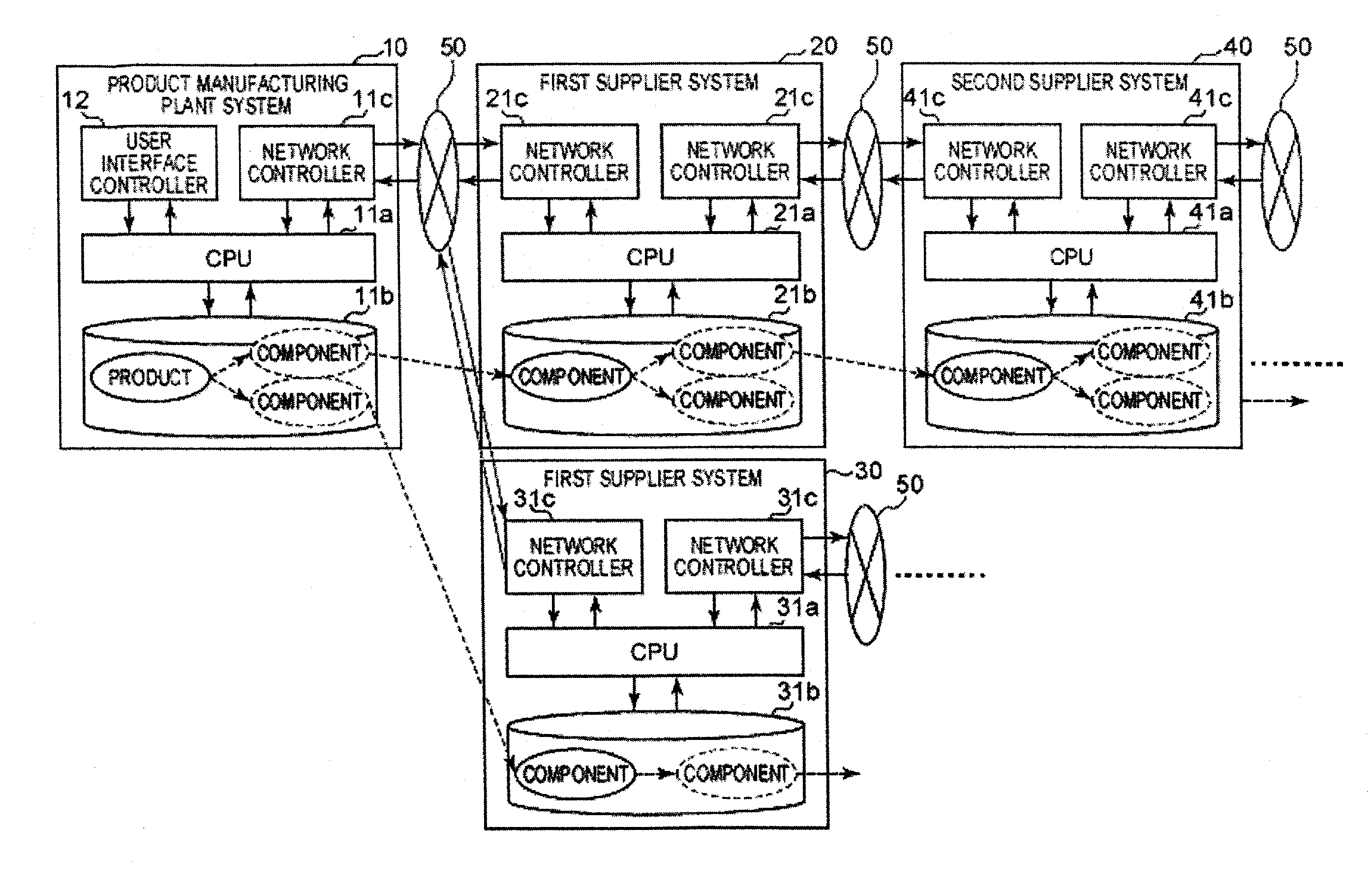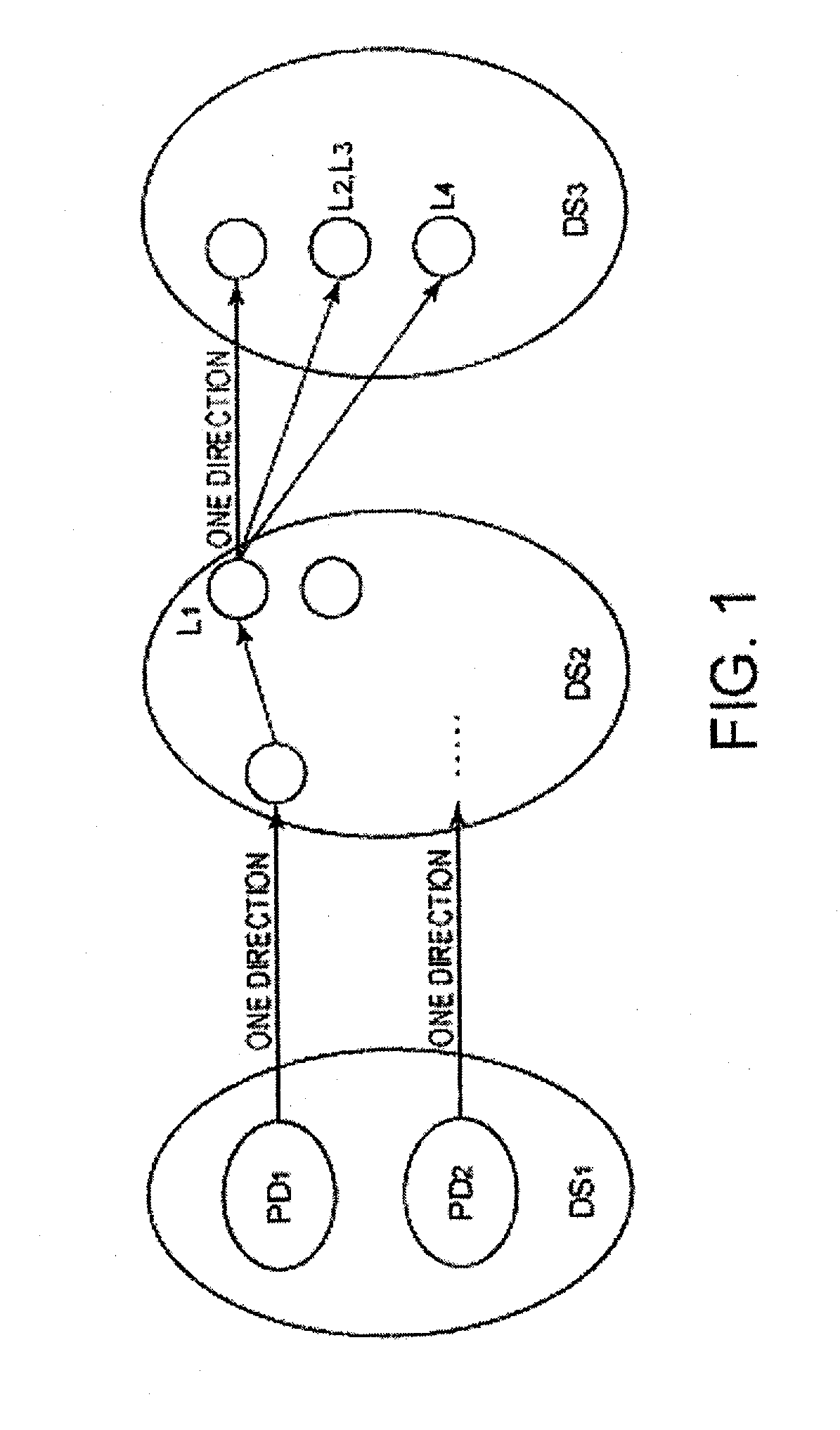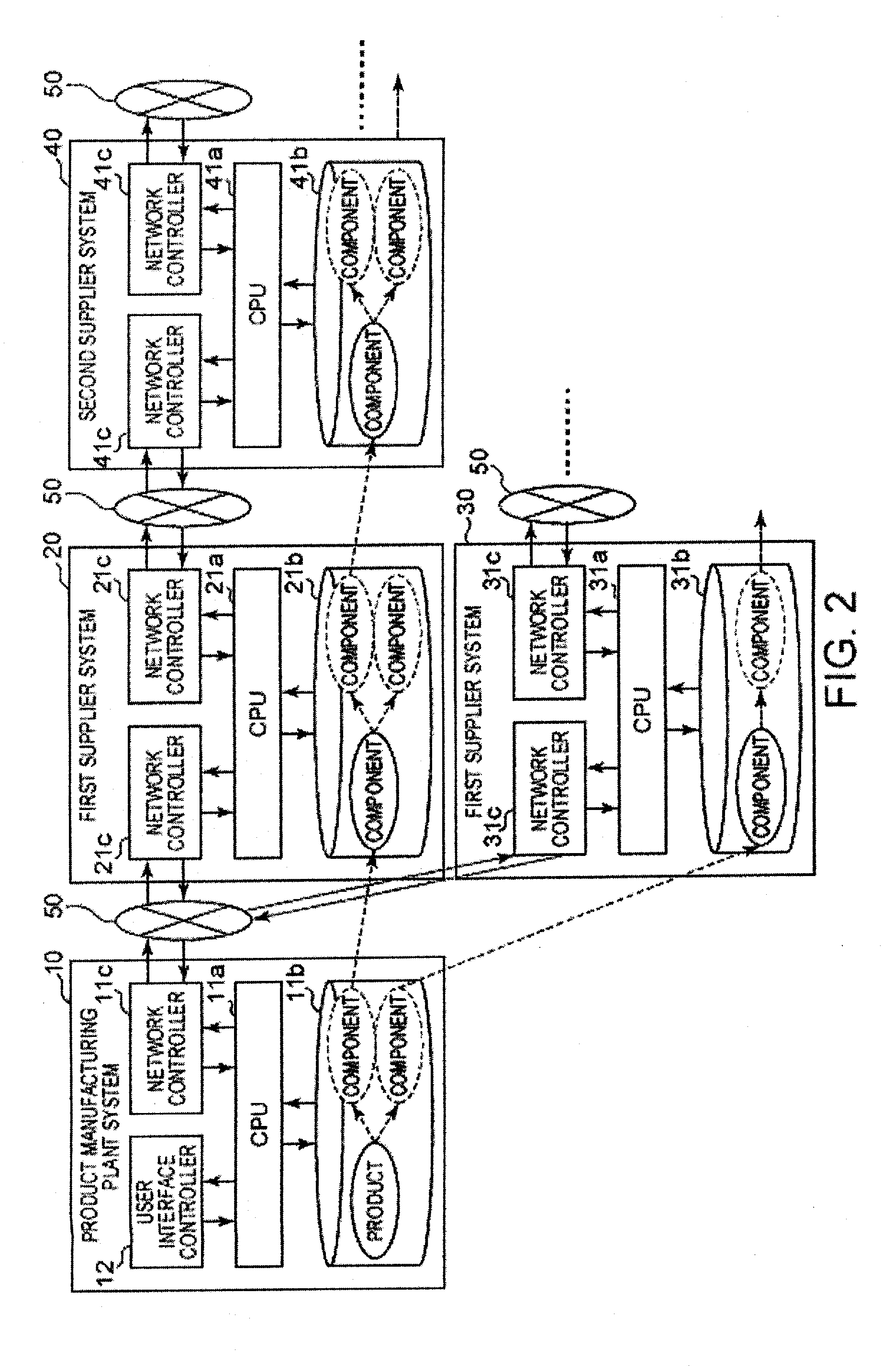Method and system for obtaining a combination of faulty parts from a dispersed parts tree
a technology of dispersed parts and combined parts, applied in knowledge representation, instruments, computing models, etc., can solve problems such as increasing recall costs, difficulty in global quality control beyond the fields, and increasing quality control
- Summary
- Abstract
- Description
- Claims
- Application Information
AI Technical Summary
Benefits of technology
Problems solved by technology
Method used
Image
Examples
Embodiment Construction
[0024]Hereinafter, embodiments of the present invention will be described with reference to the drawings and formulas.
[0025]The technology of the aforementioned data mining or decision tree assumes that access to the data (a table, a transaction, or the like) can be easily and freely performed, and there is no technology premising that access to all of the products or all of the parts is impossible since the data sources thereof are dispersed.
[0026]For example, it is generally possible to find out a combination of attribute values of the parts inducing a cause of failure, by employing a technique of the data mining for finding out a common item (an attribute value of the parts appeared in the failed product) from a given data set (transaction). However, when an attempt is made to specify a cause of failure by a technique using a confidence or the like which is commonly used, it is necessary to aggregate all of the parts with all of the attributes thereof into one table to access all...
PUM
 Login to View More
Login to View More Abstract
Description
Claims
Application Information
 Login to View More
Login to View More - R&D
- Intellectual Property
- Life Sciences
- Materials
- Tech Scout
- Unparalleled Data Quality
- Higher Quality Content
- 60% Fewer Hallucinations
Browse by: Latest US Patents, China's latest patents, Technical Efficacy Thesaurus, Application Domain, Technology Topic, Popular Technical Reports.
© 2025 PatSnap. All rights reserved.Legal|Privacy policy|Modern Slavery Act Transparency Statement|Sitemap|About US| Contact US: help@patsnap.com



